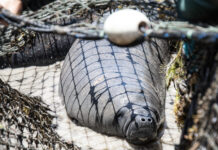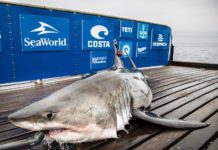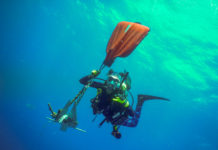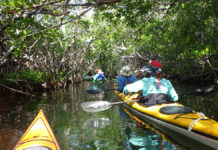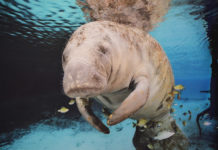
We’ve had some great unexpected fishing events that occurred these last few weeks, the Atlantic palolo worm hatch and tailing sailfish. Both are common happenings here in the Florida Keys, but the recent timing of these two events had even the saltiest of captains scratching their heads, proving there is no predictability when it comes to mother nature.
The worm is a tiny red worm that lives within the hard coral of the Florida Keys. Every year, they hatch from the coral and swim to the surface to spawn. Tarpon love to eat these tiny red worms, and when the hatch happens, tarpon congregate in large numbers at the bridges. Some locals believe this worm hatch is the only reason tarpon come to the Florida Keys, since usually once the worm hatch is over the tarpon migrate away. Normally, the worm hatch occurs during a full or new moon of May and June, on the outgoing evening tide. This year, though, the worms hatched on an unusual moon phase on an incoming tide, which caught many local captains by surprise. In fact, some claimed to have never seen the worm hatch happen during those conditions before. Regardless of when the hatch happens, you can bet that tarpon fishing is going to be action packed. Tarpon tend to be pretty aggressive eaters during that time and will often eat any bait that is along the surface. The worm hatch for 2013 has most likely passed, and though some of the tarpon have started to migrate away, there are still plenty of fish around to catch for the next month or two.
We also had an unexpected push of sailfish that came through our waters a little later than usual. Normally in the Florida Keys, sailfish migrate through in big numbers during March, April and May. We should have known something was fishy, as we never really got our usual big push of the billfish during those months. But during a few days in mid June, word spread across the Keys that sailfish were tailing in large numbers right offshore. I didn’t know how long this migration would last and was not going to miss out on the action. So early one morning I called a good customer of mine who lives in Boca Raton and told him if he can get down to Marathon by early afternoon, he could catch some sailfish. We pulled away from the dock at 1 p.m. and by 5 p.m. we were back. During our four-hour excursion we caught and released seven sailfish, hooked 11, and spotted 40. Many charter boats across the Middle Keys were reporting similar numbers during the late sailfish migration.
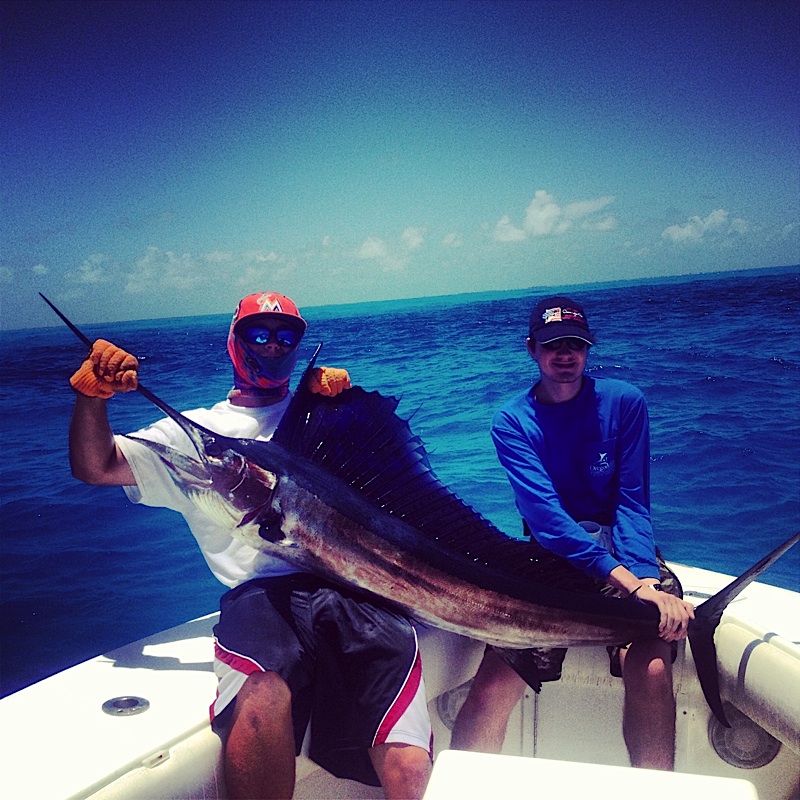
In more typical fishing news for this time of year, the mangrove snapper bite has been picking up inshore. The best times to catch them right now are early morning, evening, and night (which is great if you want to avoid the midday heat while fishing). During early morning and at night, we’ve been catching mangrove snapper on the reef anywhere from 30 to 60 feet. The fish will come up on the chum slick the way yellowtails do, and you can flat line them with chunks of ballyhoo or live bait. If you want to fish mangrove snappers in the early evening before the sun goes down, you can catch them on the bottom with some light line and a jig head with live bait. Mangrove snappers are generally not picky eaters and are pretty easy to catch. A nice plus to mangrove fishing is you usually catch yellowtails and the occasional grouper at the same time, which makes for a very tasty fishing trip.
Offshore during the last few weeks, there have been a lot of small dolphin. Most charter captains have had to travel from pack to pack in search of keepers. There are a few big fish offshore right now, you just have to put in the time looking for them. I was able to find and catch a 50-pound bull dolphin. On a flat calm day, I was up in the tower and spotted a cow (the large female dolphin, not the mammal). We hooked her up, and the bull dolphin came up to the surface to check out the situation. We had a hard time getting him to eat at first, but he finally ate a big blue runner that I had in my live well.
Now is a great time of year to fish, as anglers have many options available to them. And you never know, you might come across a few surprise fishing possibilities while you’re out on the water too.
Capt. Ariel Medero is the captain of Big Game Sportfishing, located at the Hammocks of Marathon, MM 48. For more
information, check out his web
site at www.biggamesportfish.com or email him at captainarielmedero@yahoo.com. Friend him on Facebook,
too.


















